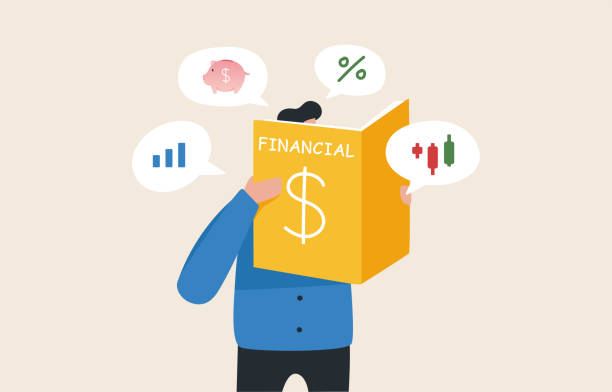Balancing debt repayment and saving for the future is one of the most common financial challenges individuals face. The tension between paying off what you owe and setting aside money for future goals can leave many people feeling overwhelmed. Should you prioritize paying off debt as quickly as possible, or should you focus on building savings to ensure financial security? The answer is rarely black and white—it depends on your financial situation, goals, and the type of debt you’re dealing with.
This guide will help you navigate the complexities of managing debt while saving effectively, offering practical strategies to achieve financial balance.
The Importance of Balancing Debt and Savings
Debt and savings are two sides of the same financial coin, and each has its own significance:
- Debt: Left unchecked, debt can grow rapidly due to interest, negatively impacting your financial health and credit score. High-interest debt, such as credit cards, can be particularly burdensome.
- Savings: Having savings is essential for financial stability. An emergency fund protects you from unexpected expenses, while long-term savings help you achieve goals like buying a home or retiring comfortably.
Neglecting one for the other can lead to financial stress. Paying off debt aggressively without any savings leaves you vulnerable to emergencies, while focusing solely on savings without addressing high-interest debt can lead to unnecessary financial losses.
Step 1: Assess Your Financial Situation
Before you can balance debt repayment and saving, you need a clear understanding of your current financial picture. Start by:
- Listing All Debts:
- Include credit cards, personal loans, student loans, car loans, and mortgages.
- Note the balance, interest rate, and minimum monthly payment for each.
- Evaluating Savings:
- Calculate the total amount in your savings accounts, including emergency funds, retirement accounts, and general savings.
- Analyzing Your Budget:
- Track your income and expenses to determine how much money is available each month for debt repayment and savings.
Step 2: Prioritize Emergency Savings
The first step in balancing debt and savings is establishing a basic emergency fund. This fund acts as a financial buffer, preventing you from relying on credit cards or loans during unexpected events like medical emergencies, car repairs, or job loss.
- Start Small: Aim to save at least $1,000 initially. This provides a basic safety net while allowing you to focus on paying down debt.
- Build Over Time: Once your high-interest debts are under control, work toward saving 3–6 months’ worth of living expenses.
Step 3: Understand Your Debt
Not all debts are created equal. Categorize your debts to determine how to approach repayment:
- High-Interest Debt:
- Includes credit cards and payday loans with interest rates typically above 15%.
- These should be your top priority as they accumulate interest quickly.
- Low-Interest Debt:
- Includes student loans, mortgages, or auto loans with interest rates under 10%.
- These can be repaid more gradually while you focus on savings.
- Good vs. Bad Debt:
- Good Debt: Investments in your future, like student loans or a mortgage, can help build wealth over time.
- Bad Debt: High-interest consumer debt that doesn’t provide lasting value should be minimized.
Step 4: Balance Strategies for Debt and Savings
There are several approaches to managing debt and savings simultaneously. Choose a strategy that aligns with your financial goals and personality:
1. The “50/30/20 Rule” Approach
- 50% of Income for Needs: Rent, groceries, and debt minimum payments.
- 30% for Wants: Discretionary spending like dining out or hobbies.
- 20% for Savings and Extra Debt Payments: Split this percentage between building savings and paying down high-interest debt.
2. Debt Snowball Method
- Focus on paying off the smallest debt first while making minimum payments on the rest.
- Once the smallest debt is paid off, use the freed-up funds to tackle the next smallest debt.
- Allocate a smaller percentage of your budget to savings until high-interest debts are cleared.
3. Debt Avalanche Method
- Prioritize paying off the debt with the highest interest rate first.
- This approach saves you the most money on interest in the long run.
- Simultaneously, contribute a fixed amount to savings each month, even if it’s small.
4. Savings First, Debt Second
- For individuals with manageable, low-interest debt, prioritize building a robust emergency fund or contributing to retirement accounts.
- Once savings goals are met, shift focus to paying down debt.
Step 5: Take Advantage of Employer Benefits
If your employer offers a retirement savings plan, such as a 401(k), take advantage of it—especially if they match contributions. Employer-matched funds are essentially free money, so prioritize contributing enough to get the full match, even if you have debt. This is particularly beneficial because:
- The compounded growth of retirement savings over time far outweighs the cost of low-interest debt.
- It allows you to build wealth while managing your obligations.
Step 6: Avoid New Debt
To effectively balance debt and savings, it’s essential to avoid accumulating new debt. Strategies to prevent this include:
- Cutting Unnecessary Expenses: Identify and reduce discretionary spending.
- Using Credit Cards Wisely: Pay off balances in full each month to avoid interest charges.
- Living Below Your Means: Resist lifestyle inflation as your income increases.
Step 7: Automate Your Finances
Automating your payments can make it easier to stay consistent with your financial plan. Set up automatic transfers for:
- Savings: Direct a portion of your paycheck to a savings account before you can spend it.
- Debt Repayments: Ensure minimum payments are made on time to avoid late fees and penalties.
Automation helps you stick to your financial goals without the temptation to spend the money elsewhere.
Step 8: Celebrate Progress
Balancing debt and savings is a long-term commitment, and it’s essential to recognize and celebrate milestones along the way. Whether you pay off a significant portion of your debt or reach a savings goal, acknowledge your progress to stay motivated.
Step 9: Seek Professional Advice
If balancing debt and savings feels overwhelming, consider consulting a financial advisor. They can:
- Help you create a personalized plan based on your income, goals, and obligations.
- Offer strategies to optimize debt repayment and maximize savings.
- Provide guidance on investment opportunities to grow your wealth.
Final Thoughts
Finding the right balance between debt repayment and savings is a delicate process that requires careful planning, discipline, and patience. By understanding your financial situation, prioritizing high-interest debt, and building a safety net, you can create a plan that works for your unique circumstances.
Remember, the goal isn’t to choose one over the other but to strike a balance that ensures both short-term stability and long-term financial growth. With consistent effort and a clear strategy, you can achieve financial freedom while securing your future.

